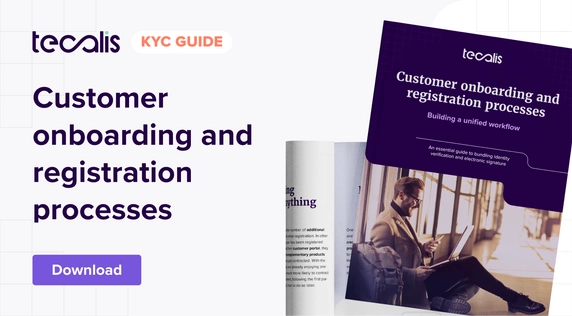Index
Get the latest news right in your inbox
We can find news about insurance in all the media practically every day. This sector is one of the most relevant in today's economy and therefore the news and current affairs of the insurance industry are on everyone's lips.
However, we must identify those relevant events and novelties that are truly transforming the insurance area and that should not be missed by those who aspire to surpass objectives for the new year.
Here you will find a summary of the most relevant news, statistics and trends that you should keep track of. A compilation of all the topics that have made the most disruptive InsurTech companies grow and triggered the closing rates of operations in multinational insurers.
What is hot news in the insurance industry
The insurance industry is undergoing a shift towards the creation of integrated ecosystems. The Open Banking proposed by PSD3 is not going to leave aside an industry whose financial system needs and can take advantage of its full potential. According to experts from firms such as Fitch, this year will be a decisive one for most large insurers and one of great opportunities for fast-growing ones.
Insurance news will focus on three main areas: technology, changing consumer demands and changes made by regulators (both at regional and international level). These three blocks will be those that make the most structural changes, both directly and indirectly, in the insurance market and its current affairs.
Some news on premium hikes is expected given the accelerated risk due to global uncertainty, although these initiatives will be accompanied by actions to contain spending. We will see reinvestments and a high sensitivity to risk management.
Relevant insurance statistics and reports

The development of the insurance business will be positive despite major international conflicts. In traditionally stable countries and regions, the insurance industry is expected to grow.
By 2040 we will see the number of non-life premiums double, which does not mean that we will see a decrease in nature and health risks, but quite the opposite. However, this very distant horizon makes us glimpse new reports on verticals that we may not yet know about (as happened in the predictions made in the 1990s for the period 2000 - 2015).
The insurance industry has been collecting data as do the rest of the BFSI (Banking, Financial Services) and telcos on the most relevant consumer concerns and habits. Increasingly, thanks to big data and machine learning, better predictions and relevant statistics can be made.
The ability of insurers to collect and analyze large amounts of data will enable even more precise policy customization, anticipating the changing needs of policyholders and improving risk management efficiency. This data-driven approach will not only drive growth in the insurance market, but will also facilitate greater transparency and trust between insurers and consumers.
Insurance news for 2024: key trends to follow
1. New regulations: attention insurance companies and brokerage firms
Although the Insurance Contract Law has not changed in recent years in most countries in relevant markets such as Europe, the United Kingdom and America (North and LATAM), changes are expected in regulations that fully affect the insurance area. This will apply especially to payments, customer due diligence processes and anti-fraud controls framed in the regulations for the prevention of money laundering and terrorist financing.
In this regard, we will see insurance news about the alliance between insurers and RegTech. Automated compliance with the requirements of demanding new regulations will be possible thanks to their tools, which also integrate easily with the systems of both InsurTechs and traditional banking and insurance companies.
2. Digital experience: the bet of insurance companies
While InsurTechs were the pioneers in taking care of their customer-related processes, large insurance companies are not going to be left behind. We will see developments in how processes that generate friction are addressed, especially in relation to the electronic signature of insurance contracts and electronic notifications (certified communication of cancellation notices, expiration, etc. through new communication channels that are faster and just as secure). Many insurers are teaming up with digital transformation partners that make these processes simpler and more agile while being secure and accessible to less digitized users.
Digital onboarding is in line with the previous point. Know Your Customer processes in insurance are defined by the new updates in the regulatory framework, in addition to the recommendations of the regulators of each market. Instant registration and same-day activation and deactivation of insurance policies will make the front pages of many media outlets.
3. The best Insurtech technologies, now within everyone's reach
The validation of sensitive documentation that must be submitted before a new customer is enrolled will be fully automated. Thanks to Artificial Intelligence and second-generation OCR technologies, insurers will see a reduction in the costs of this type of operation and customers will find it easier to obtain the products they want without bureaucratic hurdles.
Now, new use cases will be enabled, contributing to news about leading insurers that we already know and their diversification processes. This will generate synergies with other players in the sector, making collaborations as disparate as streaming services and banking or utilities a reality.
Customer preferences are undergoing a shift towards end-to-end digitization. Comprehensive online support has become a key expectation, and insurers that succeed in offering intuitive user platforms and efficient online services will be leaders in customer retention and acquisition. These expectations reinforce the importance of continued investment in improving the user experience and adopting technologies that simplify processes to meet growing consumer demands.
The term Know Your Business (KYB) will appear in insurance news and statistics associated with insurance for companies and self-employed professionals. Operations such as the power of attorney, in order to configure and sign a corporate insurance contract, will be done automatically and intelligently, consulting public databases to obtain the signature of all those involved quickly, digitally, simply and securely.
4. New developments in insurance marketing and business models
Brokerages and other insurance sales channels are going to bet on new market presence formats. We were used to seeing teleoperator pop-ups in shopping malls, but now we will see news of insurance companies reaching very specific market segments.
With solutions such as Customer Hub, any commercial agent will be able to configure and market insurance in niche markets adapted to the new reality. We will witness sales forces in mobility and voice recognition for call centers that will allow high-risk operations to be carried out with total security.
Leasing is emerging as one of the points to be taken into account for new investments by insurers and large groups. In real time, mobility insurance contracts can be signed and activated in just a few simple steps.


Relevant insurance reports, figures and statistics for the new fiscal year
1. Figures on insured customer interaction
Usage-based insurance will grow to around $70 billion by 2026 in the US alone. According to MarketsandMarkets, multi-purpose platforms will enable this only if they are accompanied by RegTech players. This implies the need for product configurators and identity and location verification systems that can confirm such usage.
Currently, the client is requesting reports on vehicle insurance. It is the insurance for which commercial agents are asked the most, followed by death, home and life. It is in the first and third categories (auto and life) where we will see better insurance statistics that talk about on-the-go on-off products.
With regard to marketing, according to UNESPA, most insurance policies (33.5%) are marketed in bank offices, followed by agents (27.5%), brokers (17.3) and the offices of large insurance companies (17.2).
In terms of customer interaction figures, the trend towards usage-based insurance represents a significant opportunity for product innovation. Insurers are expected to increasingly partner with technology companies to implement RegTech solutions that enable real-time assessment of policyholder behavior. This will not only drive the adoption of more personalized insurance, but will also set a new standard for operational efficiency in the industry.
2. Embedded insurance: Exponential growth
The statistics of embedded insurance will give much to talk about. According to recent reports from the insurance sector of the Chubb company, this vertical reached USD 3 billion at the end of 2020 and according to PWC will have figures exceeding 700,000 million after 2030. Brokers will have a relevant role in the construction of these and will have adequate digital tools to achieve it.
This is linked to the speed at which marketing is required. According to Forbes, one multinational insurance company (which it cannot name) analyzed data and was losing more than $300,000 just because it did not have specialized marketing and customer enrollment technology tools.
In relation to the growth of embedded insurance, it is essential to highlight the central role that blockchain technologies will play. These technologies will provide a secure and transparent basis for real-time contract and claims management. The implementation of blockchain-based smart contracts will enable greater automation and trust in transactions, paving the way for more efficient and secure embedded insurance.

3. Volume and payment reports
Inflation costs will continue to dominate headlines and insurance reports. Personal injury costs in the injury schedule will increase in the range of 9%. In this sense, the proper expertise must be done with digital tools that facilitate a proper data audit and a correct verification of medical documentation through OCR 2nd Gen.
On the labor front, it is estimated that only 17% of workers have a company social security system. This is a very underdeveloped pillar where collective insurance and occupational pension plans are weak.
4. Preferences and estimates: insurance statistics
Results from PWC surveys of more than 6,000 insurance customers showed that 45% of respondents expected to get comprehensive online support from their insurer and 88% would switch to another insurance company if the new one had a better user platform.
Finally, insurance reports by the MacKinsey consulting firm on the experiences of treatment, attention and preferences of policyholders indicate that the client is more willing to use a multiaccess in global multiservice platforms. Hence the need for better management platforms focused on the end user.
In addition to the aforementioned trends, it is essential to highlight the growing importance of cybersecurity in the insurance sector. With accelerated digitization, cyber threats have become a crucial concern for insurers and their customers. Industry news is expected to highlight proactive initiatives by companies to strengthen their security measures, adopting advanced cybersecurity technologies and collaborating closely with experts in the field. Tighter regulations in this area could also drive the adoption of more rigorous cybersecurity practices both in traditional insurance companies and InsurTechs.

























